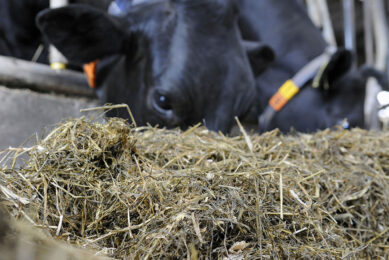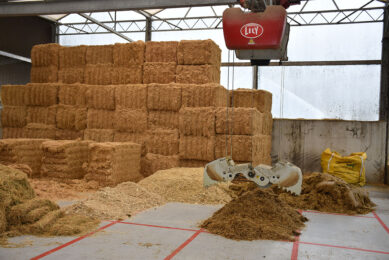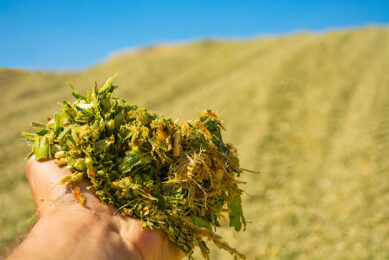Clostridia also present in good quality silage
A recently published study (Borreani et al., Journal of Applied Microbiol., 2009) shows that, even when the analysis of fresh silage shows low clostridia count, the silage can become heavily contaminated at feedout, due to aerobic instability, a phenomenon that can easily go unnoticed as long as analysis are performed on fresh silage.
Clostridia, or butyric bacteria, contamination in silage always has financial consequences for the farmer, being the loss of dry matter or direct financial penalties on milk prices which are applied in certain cheese-making regions. Professor Giorgio Borreani, an expert in silage for many years, has looked into aerobic spoilage and clostridia spore formation in more detail and demonstrated that even a very clean and easily ensiled silage such as corn or sorghum (high cut and rapid acidification typically prevent contamination), could develop clostridia contamination. In this study, corn silage analysis showed only a few hundred clostridia spores per gram of fresh silage. But after air exposure, this count skyrockets, with up to 5 million spores/g after a hundred hours in lab conditions.
In an attempt to prevent aerobic spoilage and clostridia development, the scientists have tested two different microbial additives: a homofermentative lactic bacteria (L. plantarum), and the anti-fungic bacteria L. buchneri NCIMB 40788*. While L. plantarum had no effect on aerobic spoilage (the evolution of yeast, mould and clostridia development after silo opening is similar to untreated silage ), the silos that were treated with L. buchneri NCIMB 40788 were stable up to 300 hours after air exposure: clostridia spores did not develop (see graph).
Clostridia, responsible for butyric acid production in silage and milk, are spore-forming bacteria: when the environment is unfavorable to their development, they transform into inactive, resistant spores, waiting for more favorable conditions to multiply. In the case of corn silage, the bacteria already present on the forage rapidly enter an inactive phase due to the rapid acidification of the silage and do not have time to multiply in the silo, hence a very low level of contamination and the absence of butyric acid.
At the time of feedout, the fermentation process is reactivated by the presence of oxygen: first yeast, and then mould thrive and grow in the presence of oxygen and the silo temperature rises up to 45°C. As a result, the pH rises (aerobic microorganisms consume lactic acid). In this non acidic environment, clostridia start to develop. The anti-fungic activity of L. buchneri NCIMB 40788 prevents these fermentations and stabilizes the pH under 5 units for more than 300 hours. In this case, clostridia remain inactive in the silage at feedout. Consequently, forage dry matter and nutritional quality are preserved and the risk of clostridia contamination in milk is prevented.
* L. buchneri NCIMB 40788 is present in silage additives from the Lalsil range which are designed for high dry matter forages : Lalsil® Fresh and Lalsil® Dry. Its anti-fungic and silage aerobic stabilization effects have been largely demonstrated.











